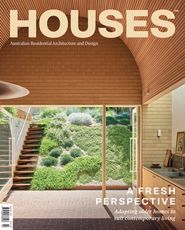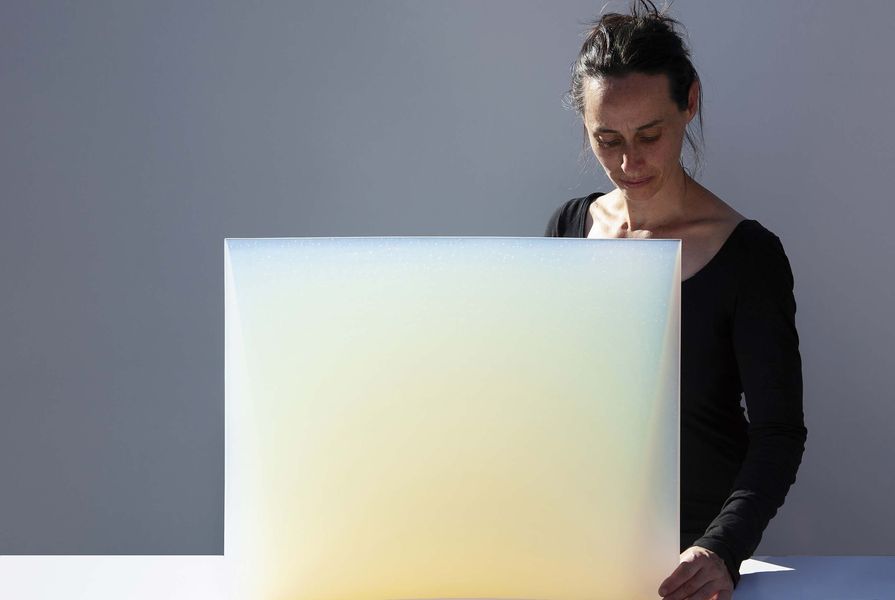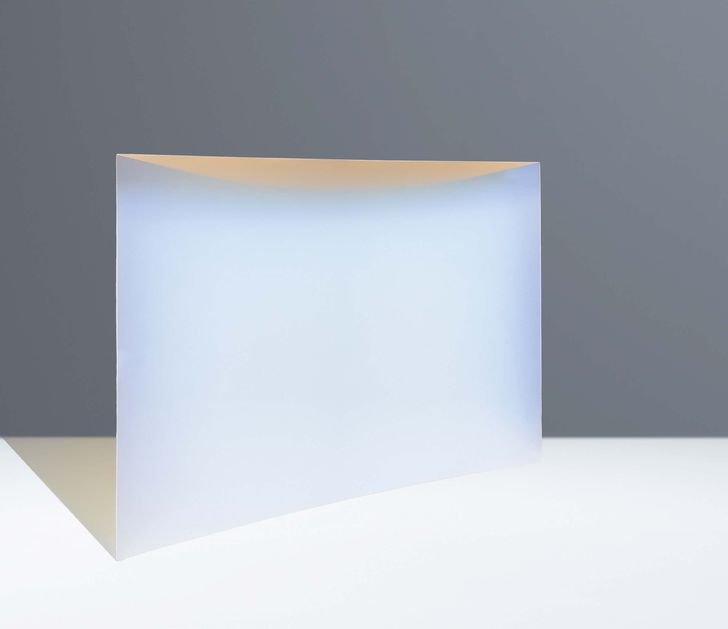As a teenager, Jessica Loughlin stood outside a bus full of her fellow grade eight kids at a stop just outside Coober Pedy. Unlike most of her distracted classmates, she was mesmerized by the light and the scale of the sky. She took a photo that day, which she still references. The infinite sense of space, light and stillness in that moment is something that she continues to chase as an experience in landscape and art.
Jessica trained in glass at the Canberra School of Art under Stephen Procter, from whom she learnt to respect her material and to express its essence. While still at art school, she won the Ranamok Prize (an Australian and New Zealand glass prize that no longer runs) and found an early foothold in the international market. Another early win in the Art Gallery of Western Australia’s Tom Malone Prize had her exhibiting alongside artists such as Howard Taylor, whom she had greatly admired throughout her schooling, and the experience enabled her to see that her work had a place within contemporary practice. For much of her 25-year career, she has been based in South Australia, close to the landscape that so inspires her.
Opaline glass splits light into warm and cool tones, as seen in receptor of light xviii (2021).
Image: Rachel Harris
Jessica’s work is currently touring Australia in a solo survey show entitled Of Light, as part of Jam Factory’s Icon series. Her highly technical pieces are made from opaline glass. The lead phosphates in the glass – which is clear when she begins – react with heat, creating a milky, opalescent effect that splits light into its colour spectrum. At times, the works appear to have a warm glow, at others, a range of blue tones. And while there is considerable experimentation in her process, nothing happens by accident, with Jessica working with exacting stacks of cut glass, finely ground glass, precise moulds and multiple firings at specific temperatures. Kiln-fired and stacked works hold to strict, prismatic geometries, their construction visible within the final form; those made with ground glass, however, reach a more organic endpoint as the particles of glass, swirled in water, fuse to their glass base with heat.
Once the work is complete – individual pieces sometimes take more than a month to make – there is still surprise, wonder and discovery in each sculpture as it responds to the light in the room, the time of day, or the particularities of any one installation. Jessica speaks of her work as quiet, but also continually communicating. Describing the artworks as “vessels for noticing light change,” she takes great enjoyment in understanding how others view them in the gallery or in their home. She sees that appreciation comes over time, through slow, detailed observation.
The bisecting lines of halites (2021) recall outback salt crystals.
Image: Grant Hancock
Recently, deeper and richer blues have become part of her palette. Jessica manipulates this colour, which still emerges from a starting point of clear opaline glass, by using heat and fusing black glass to the rear of the work, thereby breaking the passage of light. She continues to seek that colour of light at the horizon. In describing this effect, she references an essay by writer Rebecca Solnit entitled The Blue of Distance . In this text, Solnit writes: “The world is blue at its edges and in its depths. This blue is the light that got lost. Light at the blue end of the spectrum does not travel the whole distance from the sun to us. It disperses among the molecules of the air, it scatters in water.” It is a quest to produce these elusive, mirage-like qualities that Jessica suggests drives her work; to re-create the feeling that held her transfixed so many years ago by the side of a desert road.
Jessica Loughlin is represented by Sabbia Gallery.
Source

People
Published online: 20 Jun 2023
Words:
Judith Abell
Images:
Grant Hancock,
Jacquie Manning,
Rachel Harris
Issue
Houses, June 2023






















